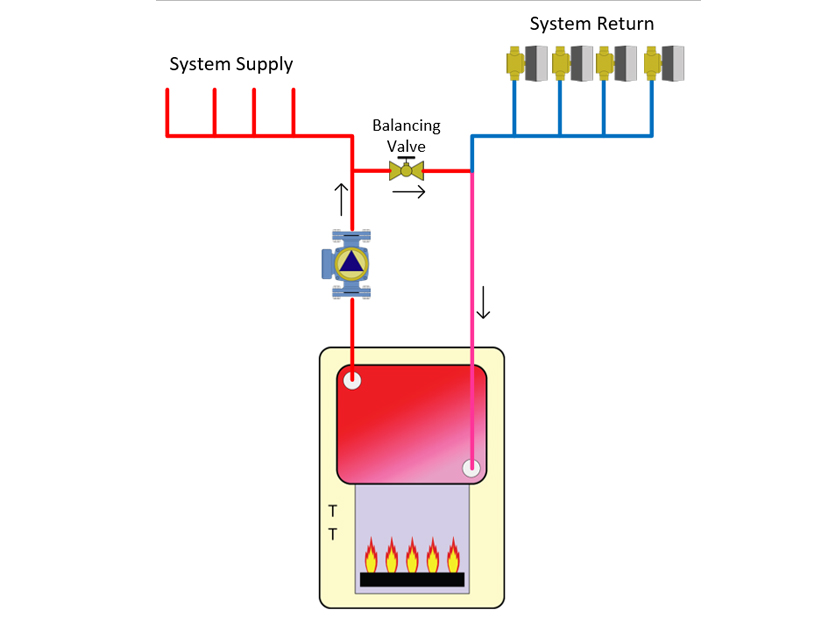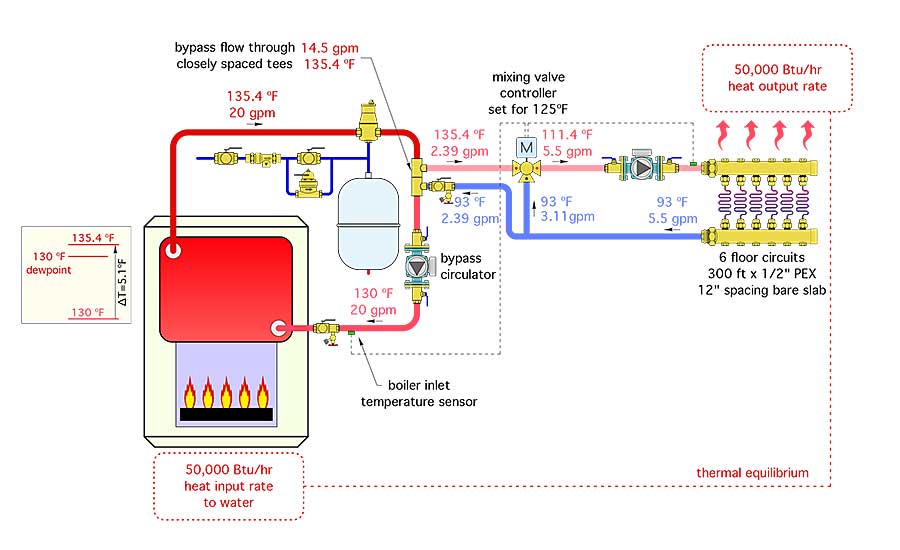Richtdow
New Member
I was wondering about the effect of cold returns on a boiler that stays above 140 F. What I mean is that I have the boiler set between 150 and 180 F. When it is heating my home the lines are all fine with a low delta and a return that is near or slightly above 140 F.
However, once the home reaches the set temperature of 65 F, the water in the radiators and associated lines decreases as the heat dissipates from them because of a lack of circulation from the boiler. Once the boiler restarts to answer the call for heat, the return lines are now at a temperature significantly lower than 140 F resulting in cold water being introduced into the boiler itself. The boiler is not setup as a cold start and it will maintain temperature at the boiler of between 145 - 180 F while waiting for a call for heat.
How does this affect the boiler? Should I be concerned about thermal shock and corrosion from condensation? If so, should I convert this boiler to a cold start to remediate this issue or something else?
Home Size: 1200 sqft with average insulation
Boiler: WGO-2 (#2 Fuel Oil)
Burner: Beckett AFG with GeniSys Model 7505
Aquastat: HydroStat Model 3250-Plus
However, once the home reaches the set temperature of 65 F, the water in the radiators and associated lines decreases as the heat dissipates from them because of a lack of circulation from the boiler. Once the boiler restarts to answer the call for heat, the return lines are now at a temperature significantly lower than 140 F resulting in cold water being introduced into the boiler itself. The boiler is not setup as a cold start and it will maintain temperature at the boiler of between 145 - 180 F while waiting for a call for heat.
How does this affect the boiler? Should I be concerned about thermal shock and corrosion from condensation? If so, should I convert this boiler to a cold start to remediate this issue or something else?
Home Size: 1200 sqft with average insulation
Boiler: WGO-2 (#2 Fuel Oil)
Burner: Beckett AFG with GeniSys Model 7505
Aquastat: HydroStat Model 3250-Plus


